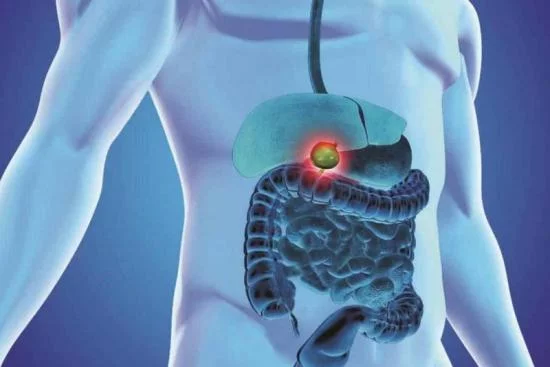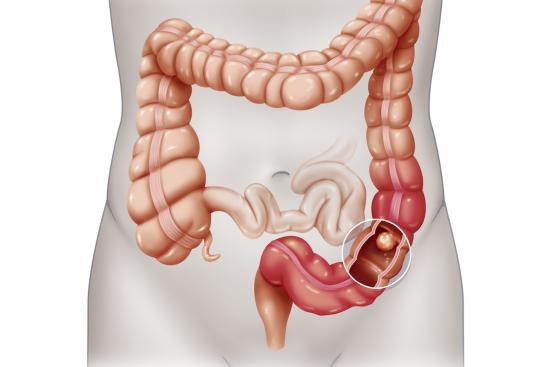Cholangiocarcinoma, an insidious cancer of the bile ducts, requires early diagnosis and curative surgery. In fact, bile duct cancer surgery offers a real chance of cure for affected patients.
People with cancer of the bile ducts.
- 90 %.
Best Clinics with Verified Reviews

- Multispecialized hospital
- 7 operating rooms
- Capacity é of 170 beds
What is a cancer of the bile duct?
Cancer of the bile duct also called cholangiocarcinoma, is a tumor that affects the liver and develops in the epithelial cells of the bile ducts. The bile ducts are small tubes that connect the liver and gallbladder to the small intestine and belong to the digestive system.
Cancer of the bile ducts occurs when abnormal cells in the bile ducts begin to divide and evolve uncontrollably. Cells can progress in surrounding healthy tissues or organs such as the gallbladder or pancreas. In particular, they can spread and affect, therefore; other parts of the body.
The gravity of bile duct cancer is generally based on its location in the bile ducts, the size of the tumor, its spread, and the overall health status of the individual.

Symptoms of cholangiocarcinoma
As a general rule, bile duct cancer does not cause symptoms at an early stage. Once you have symptoms, they include:
- Yellowing of the skin or jaundice.
- Anorexia.
- Weight loss.
- Pain in the stomach area.
- Nausea, vomiting.
- Changes in stool and urine color.
- Skin itching.
- Abdominal pain.
- Fatigue and weakness
The onset of the symptoms listed above does not necessarily reflect the individual's involvement with chalcedonic canal cancer.
Types of bile duct cancers
Bile duct cancer (cholangiocarcinoma) can begin in any part of the bile ducts system. Depending on where the tumors appear, they are grouped into 3 types:
- Cancers of the intrahepatic bile ducts: These cancers occur in the smallest tubes of the bile ducts inside the liver. Sometimes they are confused with cancers that originate in liver cells (hepatocellular carcinomas),and they are often treated in the same way.
- Cancers of the perihilar tract (otherwise called hilarious): This type of cancer appears in the hilum, where the right and left hepatic ducts are located. These cancers are associated with cancers of the distal bile ducts (cancers of the extrahepatic bile ducts).
- Cancers of the distal bile ducts: These cancers are found further down the bile ducts, closer to the small intestine. They are tumors of the extrahepatic biliary tract, like perihilar cancers, since they originate outside the liver.
Treatment options of bile duct cancer in Turkey
In Turkey, bile duct cancer treatment is tailored to the individual patient. It considers the location, size, and extent of the tumor, as well as your overall health. The aim is to eliminate the cancer while preserving the function of surrounding organs and improving your quality of life.
1. Surgery: To remove all or part of the tumor.
- Biliary resection: Removal of the part of the bile duct affected by the cancer.
- Partial hepatectomy: Removal of part of the liver affected by the tumor.
- Cholangiopancreatectomy: Removal of part of the bile duct and pancreas if the tumor affects both structures.
- Whipple surgery: A complex surgical procedure involving the removal of part of the bile duct, the gallbladder, part of the pancreas, the first segment of the small intestine (duodenum),and part of the stomach.
2. Chemotherapy: Intravenous administration of drugs to destroy cancer cells.
- Adjuvant: After surgery to reduce the risk of recurrence.
- Palliative: To control symptoms and improve quality of life when the tumor is inoperable.
In Turkey, other treatments may be offered to relieve symptoms and improve the patient's well-being:
- Radiation therapy: This uses powerful X-rays to target and destroy cancer cells.
- Biliary stents: These tubes are placed in the bile ducts to keep them open and drain bile when the tumor blocks them.
- Palliative care: This may be given to relieve symptoms such as pain, jaundice, and itching. It may include medicines, bile duct stents, and surgery to drain the bile.
Most bile duct cancers are diagnosed at an advanced stage, which limits curative options. For inoperable tumors, the priority is to relieve symptoms and improve the patient's quality of life.
Management of bile duct cancer in Turkey
Turquie Santé offers you access to expert bile duct cancer care from world-renowned surgical oncologists.
Our team of world-renowned oncologists and surgeons are dedicated to providing you with safe and effective treatment in Turkey, and will be with you every step of the way.
You'll receive caring, compassionate care in a state-of-the-art medical environment so you can face this ordeal with complete peace of mind. Our multidisciplinary team is committed to giving you the best chance of recovery by combining surgical expertise with state-of-the-art equipment.
With Turquie Santé, together against cholangiocarcinoma!
Share this page






